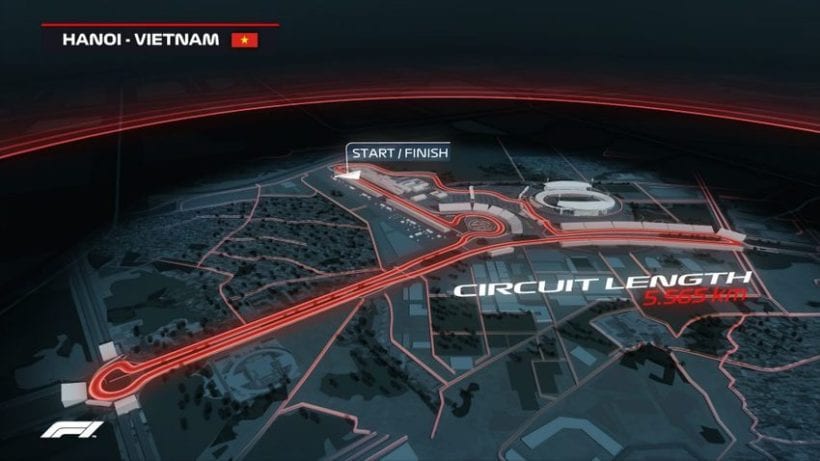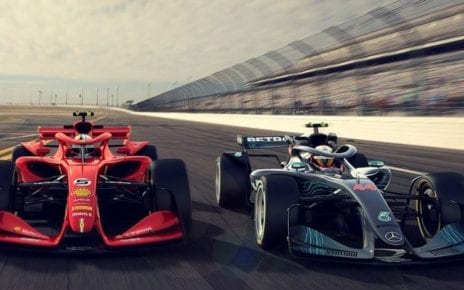There is a big change coming for the 2020 F1 season. There is an exciting new racetrack in the calendar, the Vietnam being the host. The season after next will feature a brand new street circuit in the heart of the iconic and culture filled capital city Hanoi.
Vietnam will have the honor of becoming only the fourth street race. With its Funique 5.565km track and 22 turns, it joins Singapore, Monaco, and Azerbaijan. In addition, it is going to be the fourth Asian circuit, after Japan, China and Singapore.
Both existing and purpose-built roads will be used, as a circuit design company, Tilke, colaborated with F1 experts on the new track.
Inspiration from around world
Since F1 has a wide variety of different tracks around the globe, it only made sense to look at a lot of them and draw inspiration for the new Vietnam Grand Prix.
For example, the architects that made the Circuit of The Americas, the United States Grand Prix, looked at the quick Maggotts-Becketts-Chapel sequence at Silverstone circuit, as well as Istanbul’s multi-apex Turn 8. They used many others as well.
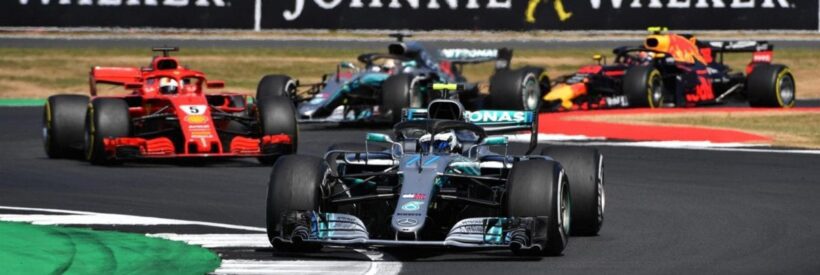
With Vietnam, the same strategy was used. It is located near My Dinh National Stadium, the western part of the city. This is important, as the goal was to create a hybrid track, combining street elements with permanent countryside elements.
The designers wanted to move away from the ordinary 90-degree corners and introduce something that enforces wheel-to-wheel racing, but at the same time retains the street feel, which makes the usual city tracks very hard and demanding.
When it comes to the turns, 1 and 2 are reminiscent of the Nurburgring opening corners, known the red overtaking zone. Juan Pablo Montoya swept by Giancarlo Fisichella in 2006 using the long straight for the slipstream, while completing his pass in the Turn 1 braking. Marvelous driving that was.
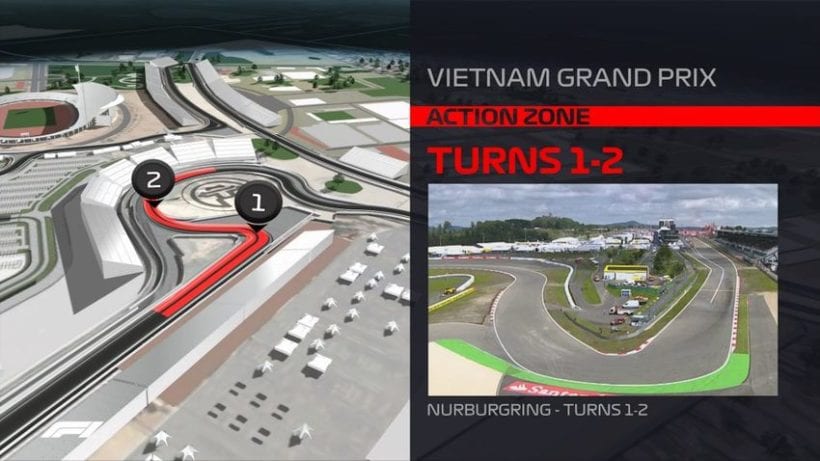
Turns 12 through to 15 for example are also familiar. They are inspired by a section of the Monaco street circuit, the legendary and infamous street circuit. The section in question ranges from Turn 1 to the run up the hill to Massenet. We will have to wait and see how hard it is compared to this famous track.
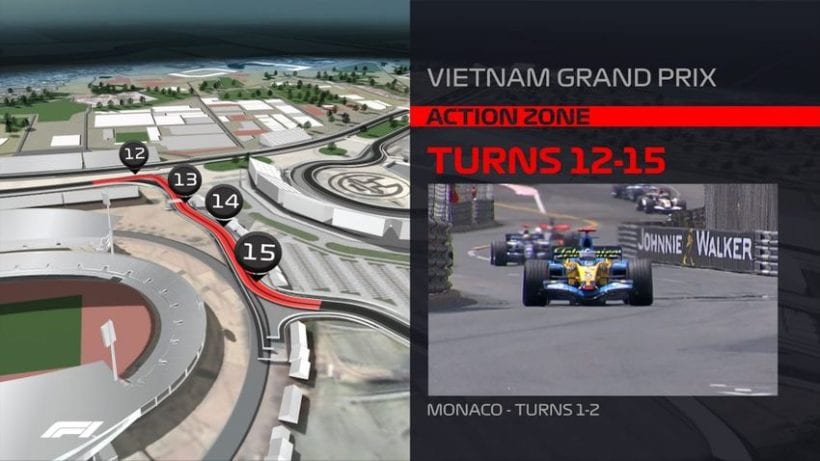
Next, turns 16 to 19 feature fast direction changes, similar to the iconic sweep of Esses at Suzuka. The last three corners are inspired by Sepang in Malaysia, a fast left-right turn followed by a tightening radius entry. This final laps sequence has a lot of potential for mistakes. It presents a chance to pick up slipstream, and make an attack in the next (first) turn.
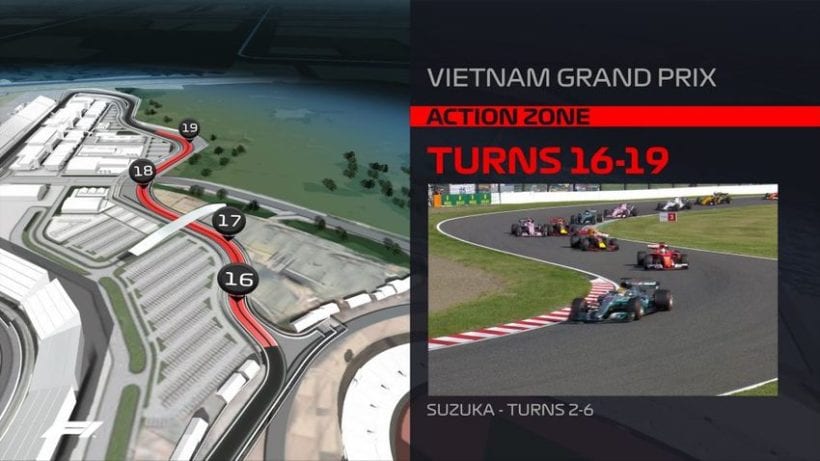
The Design
As expected, this was a long and hard project.
The Hanoi Feasibility Group was in charge of providing location suggestions, layouts of the track and Computer Aided Design data to the F1 Motorsports team. They in turn developed a simulation of the track to analyze everything. In this stage, G-force, car speeds and other elements are tested and measured. The final design is the curtesy of F1 Motorsports team, Tilke, City of Hanoi, and the FIA.
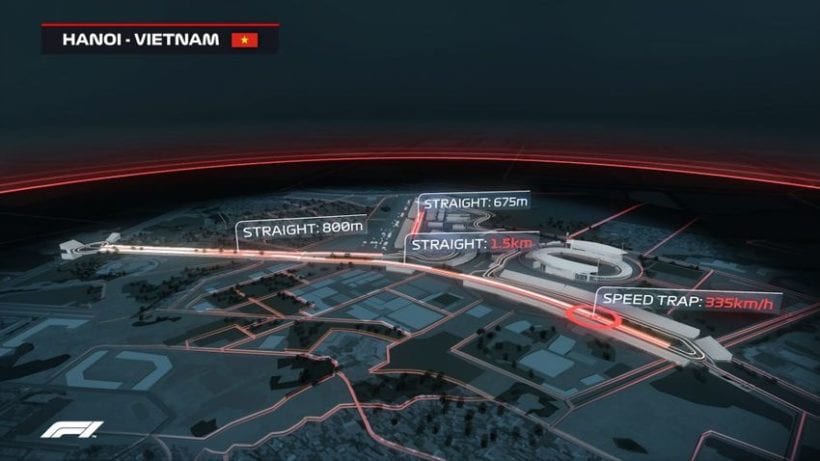
What to expect?
The spectators should expect plenty of action, while the drivers’ skills will be put to test. A variety of different corners, ranging from slow speeds, medium speeds and many other combinations with high speeds, as well as flat corners and straights, the longest being 1.5 km and potential speeds of 335km/h, are more than enough elements for a future favorite track.
The opening is slower, while the final sequence puts focus on cornering. The long straights are a challenge because they demand balance of the wing levels, in order to maximize the speed on the while also generating downforce.
When it comes to the pit lane, it misses out the last and first corner, reducing the time needed to complete a stop, making a strategy with multiple stops a better choice.
What’s next?
The representatives of the F1 circus visited the new track a few times. FIA’s Race Director, Charlie Whiting, is responsible for granting the license to the circuit when everyone is satisfied with the safety and the final design. Vietnam track has to meet the the highest level required to host F1, which is the Grade 1 requirement.
Although April 2020 is still far away in the eyes of the fans, there is plenty yet to happen until then. The construction continues, as many approvals are still necessary. The whole process will last until the very start of the first race in 2020. Stay tuned, and slowly get ready for a whole new experience in the Formula One racing!
Win Two Tickets For Formula 1 2020 Vietnam Grand Prix

